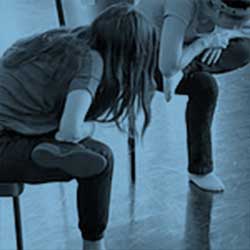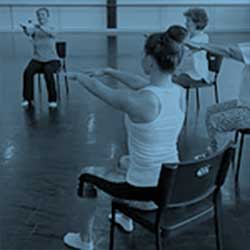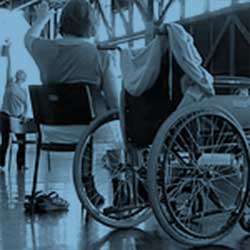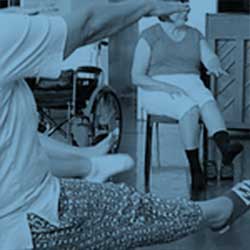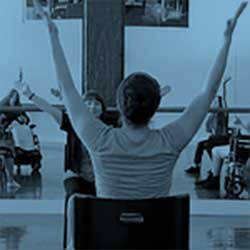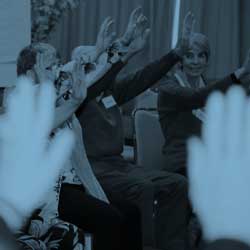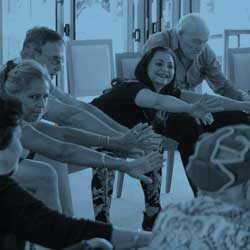Dance Health Alliance™ was established to bring together experts, educators, practitioners, and researchers in the field of dance health. Its formation aimed to provide a unified voice, share knowledge and resources, promote best practices, and advocate for integrating dance into healthcare systems.
Since its establishment, the Dance Health Alliance has been at the forefront of advancing dance as a therapeutic modality, pioneering innovative programs, conducting research, and fostering collaborations to expand the reach and impact of dance in promoting holistic well-being.
As the field continues to evolve, the Dance Health Alliance remains committed to its mission, shaping the future of dance health and empowering individuals to discover the transformative power of movement.
Dance Health Alliance™ was born in Australia due to connection and inspiration from Andrew Greenwood from Switch2Move in the Netherlands and Gwen Korebrits. Andrew and Gwen collaborated on their knowledge and fundamental research to develop a movement methodology, and Dance for Health launched in Australia in April 2015. The launch occurred at the Sydney Dance Company, with over 45 Multiple Sclerosis participants, Physiotherapists, Lectures and Doctors. There was media interest from channel nine’s Today Show and an in-depth segment aired in June 2015.
The Launch of the Dance Health Alliance™ Australia
After successfully growing a calendar of community and care home classes using their methodology under Dance for Health’s banner in 2016, Gwen decided it was time to develop.
She connected with like-minded professionals, registered as a charity organisation, appointed a board, expanded the vision, and Dance Health Alliance™ was born.
Dance Health Alliance™ have created a teacher training program specifically for the Australian market, with support from Andrew Greenwood. These programs support allied health professionals, experienced dancers, and facilities to implement a research-based, practical, proven, and innovative way for people to stay active, strong, agile, inspired, connected and creative. Focusing on the person rather than the illness, Dance Health Alliance™ was founded to start the world dancing to prevent disease and support the search for cures.
Our support, research, and focus areas are aimed at people at any stage of the diseases listed, allied health professionals wanting innovative and current add-ons to support their work, and organisations and foundations supporting Multiple Sclerosis, Parkinson’s, Dementia, Alzheimer’s and Arthritis. Dance Health Alliance™ provides a certified training and education program, an ambassadors system, ongoing CPD opportunities and yearly subscription services.
Proven Benefits:
- Reduces anxiety, isolation and the incidence of falls.
- Reinvigorates individuals and environments.
- Creates an atmosphere of fun and builds social connections.
- Engages and trains staff, leading to better retention of staff.
- Allows family members to be involved in creative rehabilitation and treatment.
Why Dance?
Dance is an inclusive, social and holistic activity which has the power to engage individuals of all ages and improve physical, mental and social health.
Why Dance?
Dance is inclusive and anyone can take part;
Dance can be tailored to match the physical capabilities of an individual and the cultural diversity of a population;
Dance has a myriad of physical health benefits; and
Dance is a social activity promoting a sense of well-being and social inclusion. 1
Why Now?
With an ageing population and a climate where governments, health organisations and health insurers are looking for answers to global health epidemics such as Multiple Sclerosis, Parkinson’s Disease and Dementia, Dance can play a significant role in the health and wellness of individuals, communities and the general public. Dance is perfectly positioned to support the public health sector providing proactive and cost-effective solutions to global wellness challenges.
The Benefits
Research shows that dance…
Improves balance and is associated with reduced risk of falls 2–5
Improves cardiorespiratory fitness 4–6
Improves strength, body agility, flexibility 4
Decreases Body Mass Index (BMI) 7
Improves mood 8 and
Induces neuroplasticity 9 and,
Enhances memory 10
The benefits of dance have been documented across a range of medical conditions including:
Arthritis including Osteoarthritis and Rheumatoid Arthritis 11
Neurodegenerative diseases including Parkinson’s Disease and Multiple Sclerosis 3,12–14
Dementia 15
Depression 8
Intellectual disabilities 16
__________________________________________________________________________________________
References and Further Reading
1. Bupa. Shall We Dance Report. (2011).
2. Krampe, J. Dance-based therapy to decrease fall risk in older persons. (University of Missouri–Columbia, 2010).
3. Hackney, M. E. & Earhart, G. M. Effects of dance on balance and gait in severe Parkinson disease: a case study. Disabil. Rehabil. 32, 679–684 (2010).
4. Hopkins, D. R., Murrah, B., Hoeger, W. W. & Rhodes, R. C. Effect of low-impact aerobic dance on the functional fitness of elderly women. Gerontologist 30, 189–192 (1990).
5. Donath, L., Roth, R., Hohn, Y., Zahner, L. & Faude, O. The effects of Zumba training on cardiovascular and neuromuscular function in female college students. EJSS 14, 569–577 (2014).
6. Baldari, C. & Guidetti, L. VO2max, ventilatory and anaerobic thresholds in rhythmic gymnasts and young female dancers. J. Sports Med. Phys. Fitness 41, 177–182 (2001).
7. Huang, S. Y., Hogg, J., Zandieh, S. & Bostwick, S. B. A ballroom dance classroom program promotes moderate to vigorous physical activity in elementary school children. Am. J. Health Promot. 26, 160–165 (2012).
8. Koch, S. C. et al. Effects of Dance Movement Therapy and Dance on Health-Related Psychological Outcomes. A Meta-Analysis Update. Front. Psychol. 10, 1806 (2019).
9. Müller, P. et al. Evolution of Neuroplasticity in Response to Physical Activity in Old Age: The Case for Dancing. Front. Aging Neurosci. 9, 56 (2017).
10. Simmons-Stern, N. R., Budson, A. E. & Ally, B. A. Music as a memory enhancer in patients with Alzheimer’s disease. Neuropsychologia 48, 3164–3167 (2010).
11. Marks, R. Dance‐based exercise and Tai Chi and their benefits for people with arthritis: a review. Health Educ. 105, 374–391 (2005).
12. Marchant, D., Sylvester, J. L. & Earhart, G. M. Effects of a short duration, high dose contact improvisation dance workshop on Parkinson disease: a pilot study. Complement. Ther. Med. 18, 184–190 (2010).
13. Mandelbaum, R. & Lo, A. C. Examining Dance as an Intervention in Parkinson’s Disease: A Systematic Review. American Journal of Dance Therapy vol. 36 160–175 (2014).
14. Mandelbaum, R., Triche, E. W., Fasoli, S. E. & Lo, A. C. A Pilot Study: examining the effects and tolerability of structured dance intervention for individuals with multiple sclerosis. Disabil. Rehabil. 38, 218–222 (2016).
15. Verghese, J. Cognitive and mobility profile of older social dancers. J. Am. Geriatr. Soc. 54, 1241–1244 (2006).
16. Martínez-Aldao, D., Martínez-Lemos, I., Bouzas-Rico, S. & Ayán-Pérez, C. Feasibility of a dance and exercise with music programme on adults with intellectual disability. J. Intellect. Disabil. Res. 63, 519–527 (2019).
17. Fong Yan, A. et al. The Effectiveness of Dance Interventions on Physical Health Outcomes Compared to Other Forms of Physical Activity: A Systematic Review and Meta-Analysis. Sports Med. 48, 933–951 (2018).
18. Merom, D., Ding, D. & Stamatakis, E. Dancing Participation and Cardiovascular Disease Mortality: A Pooled Analysis of 11 Population-Based British Cohorts. Am. J. Prev. Med. 50, 756–760 (2016).

